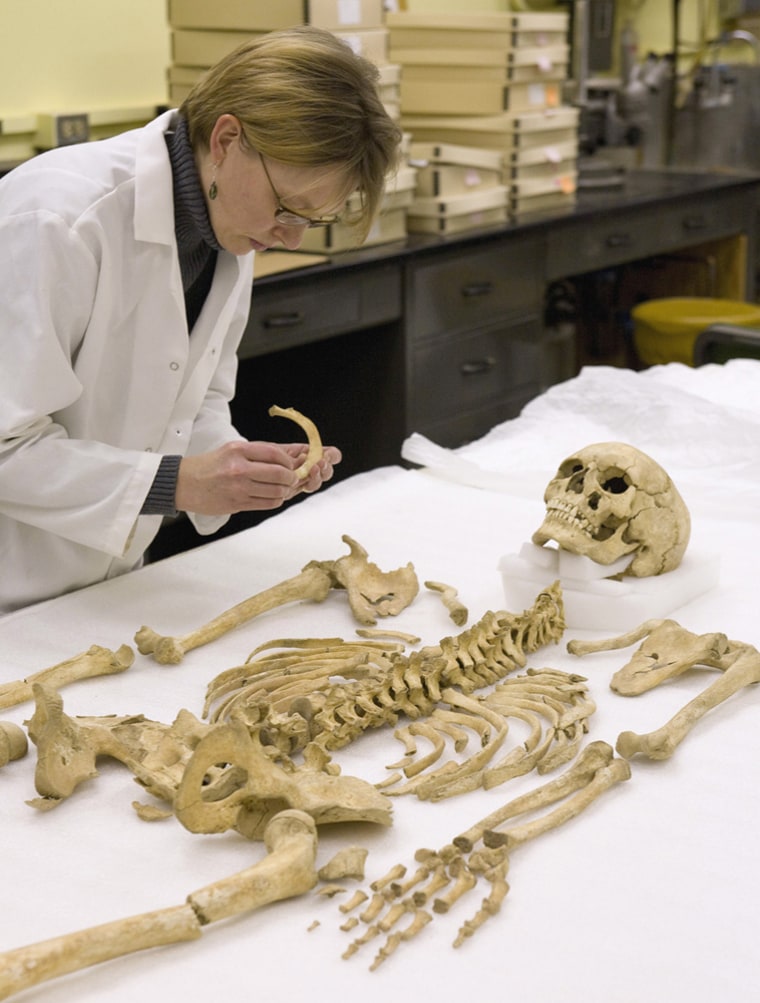It is a tale of toil, starvation and death, set forth in messages from the grave.
The saga of life in 17th century America — "Written in Bone" — goes on display Saturday at the Smithsonian's National Museum of Natural History.
Some 340 objects, including artifacts and human bones, are on display for two years, with discussions of how cold cases from colonial times shed light on what life was like for some of the earliest English and Africans to settle in America.
The exhibit is "a fascinating window into the lives of our nation's earliest colonists," observed museum director Cristian Samper.
Since 1992 researchers have unearthed the remains of hundreds of early settlers around Chesapeake Bay.
"Now we can get to know these individuals, learn about how they lived and sometimes how they died," said forensic anthropologist Douglas Owsley, curator of the exhibit.
Added co-curator Karin Bruwelheide: "Stories more amazing than you can ever imagine can be revealed by this type of investigation."
Indeed, among the stories told in the exhibit is the mystery of a grave found in 2002 just outside the palisade at Jamestown.
The bones of a man 5-foot-3 (1.52-meter), aged 30 to 36, yielded no obvious cause of death. Nothing clearly identified the occupant other than a captain's staff and coffin, indications that he was someone important.
Records show four men in that age group died in the early years of the Jamestown colony 400 years ago.
One died after a brief illness, which would leave no clue in the bones, and was recorded as buried in the parade ground just outside the walls.
Now, nameless no longer are remains believed to be those of Captain Bartholomew Gosnold, who led an expedition to New England in 1602, named Cape Cod for the fish and Martha's Vineyard for his daughter, and captained Godspeed, one of the three ships that sailed to Virginia in 1606.
Included is a life-size figure of Gosnold, dressed in captain's garb of the time.
Owsley, who often assists police in their investigations, said the exhibit offers a look at how forensic science works.
There is a public fascination with forensics thanks to television shows, he explained, but those can sometimes be misleading, Owsley said. "This gives us a chance to show the science — how we know what we know."
The bones on exhibit tell a tale of lives lived and lost.
"Lifelong, backbreaking labor marked the bones of men, women and children who tended fields. Most are nameless now, their stories lost — until we find their remains," proclaims the greeting for visitors in a section on working life.
For example, consider tailor's notches and shoemakers femur.
Studying these ancient bones tells the scientists that one lady was a tailor, her front teeth marked by tiny notches from holding pins. Another thigh bone shows its owner was a shoemaker, the bone changed by the pounding of leather and nails into boots braced on the man's leg.
A look at medical care of the time includes a set of 17th century medical tools — a sight not for the squeamish.
